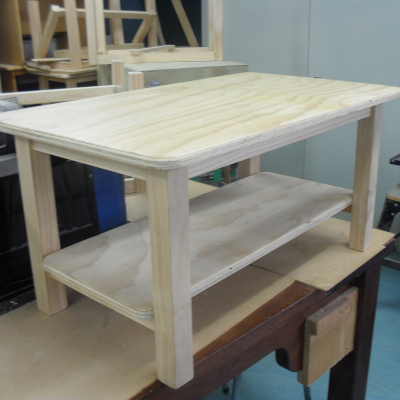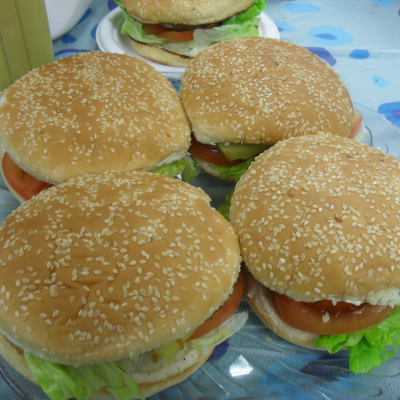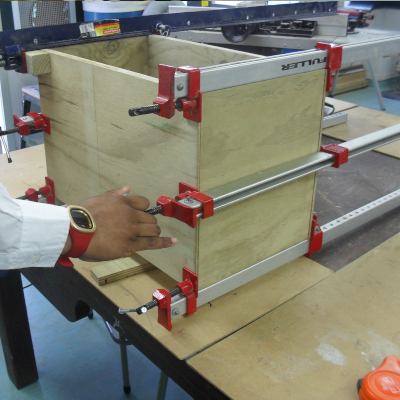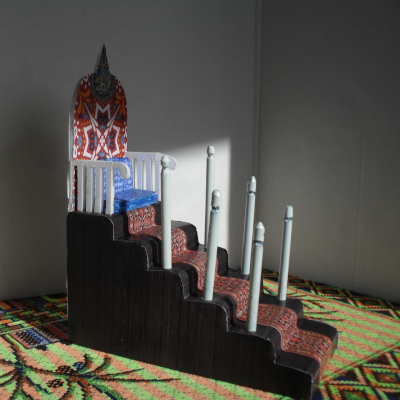Technology

Technology is intervention by design. Design is characterised by innovation and adaptation and is at the heart of technological practice. Technology makes enterprising use of knowledge, skills and practices for exploration and communication.
Technology
Learning Areas
The technology learning area has three strands: Technological Practice, Technological Knowledge, and Nature of Technology. These three strands are embedded within each of the technological areas:
- designing and developing materials outcomes (DDMO)
- designing and developing processed outcomes (DDPO)
- design and visual communication (DVC)
At Al-Madinah, Technology is offered at all levels. At Primary level under Technological practice students will investigate a context to develop ideas for potential outcomes. For Technological Knowledge students will understand that functional models are used to explore, test, and evaluate design concepts and they will undertake planning to identify the key stages and resources required to develop an outcome. As for Nature for Technology they will understand how society and environments impact on and are influenced by technology.
In secondary apart from offering Achievement Standards and Unit Standards, Automotive units are also offered to NCEA Levels two and three. The Automotive Units are out sourced from external providers.
Most of the units comprises of theory and practical components. Students learn the manual skills to produce various outcomes as per the assessment requirements. They also learn to safely operate various tools and machines and become proficient operators.
The Career Pathways
Technology pathways are very diverse and students can venture into numerous fields of studies at tertiary levels and ultimately leading to highly paid employments. Some of the fields are but not limited to Engineering, Teaching, Plumbing, Electrical, Architecture, Media Design, Automotive, Machinists, Fabrication, Surveying, Navigation, Lab Technician, Building, etc.
Technology student’s projects
Primary
Year 1 – 2
Technological Practice
Students will investigate, outline a general plan to support the development of an outcome, identifying, describe, communicate and evaluate appropriate steps and resources.
Technological Knowledge
Students will understand that functional models are used to represent reality and test design concepts and that prototypes are used to test technological outcomes, and understand that technological products are made from materials that have performance properties and understand that technological systems have inputs, controlled transformations, and outputs.
Nature of Technology
Understand that technology is purposeful intervention through design and that technological outcomes are products or systems developed by people and have a physical nature and a functional nature.
Year 2 – 3
Technological Practice
Students will develop a plan, explain the outcome, describe the attributes and investigate a context to develop ideas for potential outcomes. Evaluate these against the identified attributes; select and develop an outcome in terms of the need or opportunity.
Technological Knowledge
Students will Understand that functional models are used to explore, test, and evaluate design concepts for potential outcomes and that prototyping is used to test a technological outcome for fitness of purpose. Understand that there is a relationship between a material used and its performance properties in a technological product. Understand that there are relationships between the inputs, controlled transformations, and outputs occurring within simple technological systems.
Nature of Technology
Understand that technology both reflects and changes society and the environment and increases people’s capability and that technological outcomes are developed through technological practice and have related physical and functional natures.
Year 5 – 6
Technological Practice
Investigate a context to develop ideas for potential outcomes. Trial and evaluate these against key attributes to select and develop an outcome to address the need or opportunity.
Technological Knowledge
Students will undertake planning to identify the key stages and resources required to develop an outcome. Revisit planning to include reviews of progress and identify implications for subsequent decision making. Describe the nature of an intended outcome, explaining how it addresses the need or opportunity. Describe the key attributes that enable development and evaluation of an outcome. Investigate a context to develop ideas for potential outcomes. Trial and evaluate these against key attributes to select and develop an outcome to address the need or opportunity.
Nature of Technology
Understand how society and environments impact on and are influenced by technology in historical and contemporary contexts and that technological knowledge is validated by successful function and that technological outcomes are recognisable as fit for purpose by the relationship between their physical and functional natures.
Intermediate
Years 7 to 10
Over the course of years 7–10, students learn in the three technological areas, developing their knowledge and skills in context. By offering a variety of contexts, teachers help their students to recognise links between technological areas. Students are encouraged to access relevant knowledge and skills from other learning areas and to build on their developing key competencies.
Designing and developing materials outcomes
In this area, students develop knowledge and skills that enable them to form, transform and work with resistant materials, textiles and fashion. This allows them to create both conceptual and prototypic technological outcomes that solve problems and satisfy needs and opportunities. They develop knowledge about the systems, structures, machines and techniques used in manufacturing products, and they use manufacturing and quality assurance processes to produce prototypes and batches of a product.
Designing and developing processed outcomes
In this area, students develop knowledge of the materials and ingredients used to formulate food, chemical and biotechnological products. They form, transform and manipulate materials or ingredients to develop conceptual, prototypic and final technological outcomes that will meet the needs of an increasingly complex society.
Design and visual communication
In this area, students learn to apply design thinking. They develop an awareness of design by using visual communication to conceptualise and develop design ideas in response to a brief. In doing so, they develop visual literacy: the ability to make sense of images and the ability to make images that make sense. They apply their visual literacy through using sketching, digital modes and other modelling techniques to effectively communicate and present design ideas.
Senior
NCEA level 1
Technology
Pre-Requisite: Technology at Year 10.
Course content: Level 1 Technology course includes design development and material choice in making a prototype.
Students may choose to do standards up to 20 credits only. The programme allows students to get course endorsement.
Design and Visual Communication
Pre-requisite: None (Technology at year 9 and 10 would be an advantage)
Course Content: Level one DVC involves Graphic practice in context of product design, spatial design, etc. The course allows students to get course endorsement.
NCEA level 2
Technology
Pre-Requisite: Technology at Year 11.
Course content: Level 2 technology course includes knowledge of good safety and work practices in an automotive industry and develop to make and trial a prototype. The programme does not allow students to get course endorsement.
Design & Visual Communication
Pre-requisite: At least14 credits at Level one DVC
Course Content: Level two DVC involves Graphic practice in context of product design, spatial design, etc. The course allows for students to get course endorsement.
NCEA level 3
Technology
Pre-Requisite: Technology at Year 11 or Year 12.
Course content: Level 3 Technology course consists of Achievement Standard and Automotive unit standards
Design & Visual Communication.
Pre-requisite: At least 14 credits at Level two DVC
Course Content: Level three DVC involves Graphic practice in context of product design, spatial design, etc.
Allows the student to achieve with Endorsement.




